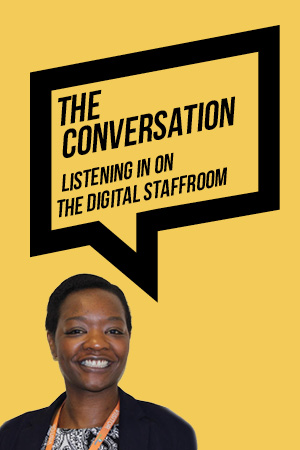What do we want? Character! When do we want it? Soon!
@GuyClaxton
Guy Claxton’s latest blog focuses on empowering young people with the values and attributes they need to live well in this world. True to his career-long ideals, he argues that a curriculum should offer them opportunities to explore different avenues within and beyond school and to pursue occupations that give them purpose and happiness. Pedagogically, they should be given a diet of escalating challenges that fill them with excitement and interest so that they develop “positive learning dispositions”.
Claxton then outlines the “12 pillars of fulfilment” as a common core of character development, and it’s interesting to note, too, that he views the coaching aspect of teaching and leadership as a protective factor for their ideals.
There are as many supporters as detractors of Claxton’s vision, but as a chair it has made me think about the importance of ensuring our own vision strives, not only to empower students’ success, but their happiness too.
One size does not fit all: Autism Spectrum Disorders
Christina Whalen via @ed_rethink
This blog is a great read for autism awareness month. Though Christina Whalen notes the common traits of autism spectrum disorders (ASD) and the common challenges faced by people with ASD, she also makes a compelling appeal to the fact that no two people on the spectrum are the same.
Whalen’s blog is full of interesting data: one in 44 students are estimated to be on the spectrum, and ASD is four times more common in boys than in girls yet impacts demographics and socioeconomic groups equally. However, Whalen explains, diagnosis alone doesn’t really tell us anything about what to expect, as the range of disabilities is incredibly diverse.
As a chair of governors, I regularly raise questions to ensure the school is supporting students with ASD by following appropriate education plans and interventions. Reading this has strengthened my resolve to ensure those plans are appropriately tailored to each one.
As food poverty is set to soar, how many free school meals reach under-fives?
@EduPolicyInst
This is a very insightful blog from the Education Policy Institute, tackling a growing item on many school agendas. Many of the families on low incomes in our communities are already struggling to afford essentials, and stark data shows that an additional 1.3 million families will be pulled into poverty next year – including 500,000 children.
Here, the EPI’s Kerris Cooper highlights the importance of free school meals and the impact that food poverty has upon children’s education. Recognising that there are children in poverty who are still missing out, the post nonetheless strongly welcomes the decision to permanently extend FSM to children in families with no recourse to public funds, provided they meet the eligibility criteria.
While the blog ostensibly addresses the policy’s application to nursery-aged children, it gives insights into data trends that should be of interest to any primary school leader. And its theme is universal to the sector. It has certainly made me reflect deeply on our duty to identify children and families who are experiencing food poverty so that we can support them as much as we can.
The ever-evolving leadership lens
@E_Sheninger
This post offers some great insights on leadership. Rather than to offer a full and final set of attributes, Eric Sheninger instead starts by accepting that his own lens for understanding the role has changed and continues to change. The aim, he argues, is to be able to adapt in different ways to show improvement as contexts change.
He goes on to list examples of disruptive events that challenged his own status quo and led him to develop his own “pillars of digital leadership” and embrace a more nuanced leadership perspective.
As a chair and trustee, I have seen leadership teams use research and evidence to improve outcomes. From that experience, I can only agree with Sheninger that relationship building never ceases to be vital to implementation.
A thought-provoking reminder to embrace change and create spaces for practices to evolve.













Your thoughts